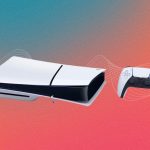Working from home is easy for some and difficult for others, but one place it’s downright impossible is the International Space Station . So pandemic or no pandemic, the latest crew had to get themselves up there. They’ve just had a successful launch and arrival, but only after a protracted quarantine period.
To be clear, ISS crews are always quarantined prior to launch to make sure they don’t bring the flu up from a chance encounter, but given the coronavirus situation, this was a special occasion. Quarantine started in April and not even the crew’s families were allowed to be confined with them. Only essential personnel were allowed at launch.
I’ve asked NASA for more details and any extra measures they’ve taken regarding the coronavirus for this or future missions.
Expedition 63 will relieve the current crew after about a week of overlap, during which no doubt the ISS begins to feel fairly crowded.
This crew is special in that among its duties will be to welcome the astronauts aboard the first Commercial Crew mission to the ISS, who will arrive on a SpaceX Crew Dragon capsule launched aboard a Falcon 9 rocket. That mission, too, is currently on schedule for May despite the pandemic.
Every crew mission for years has been done using Russia’s venerable Soyuz spacecraft. These have been updated continually for decades, but still feature more than a little of what might best be described as “repeatedly flight proven” technology.
The effort to engineer a state of the art spacecraft for crewed missions has lasted several years, coming down to SpaceX and rival Boeing in the home stretch. But while both have suffered repeated delays, Boeing has had numerous other failures that have pushed its launch out toward the end of the year and perhaps beyond. SpaceX, on the other hand, is ready to go.
The first Commercial Crew mission, whether it’s next month or a little later, will be the culmination of years of competition, and the first time a crew has gone to orbit in an American-made spacecraft since the Shuttle was retired. (Virgin Galactic has piloted its spacecraft to the edge of space, but its human-rated craft is not an orbital vehicle.)
If all goes well, NASA’s Chris Cassidy and Roscosmos’s Anatoly Ivanishin and Ivan Vagner will welcome the historic mission to the ISS soon.
Powered by WPeMatico






